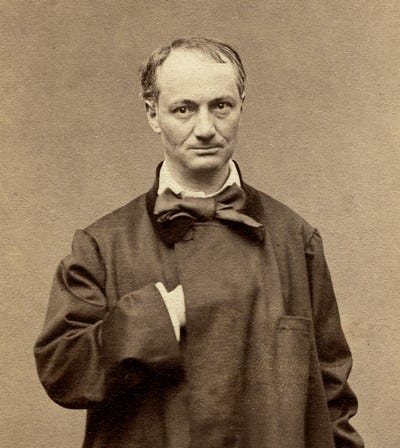flâneur futile
Those who do not participate to some extent in Baudelaire’s unique devotion to images will grasp very little of him.
—Roberto Calasso
I have contented myself with feeling.
—Charles Baudelaire
The voraciousness of Baudelaire —his incessant hunt for images. The flâneur as receptacle, treading further into city streets incommensurate. Decades later, in his disciple, Benjamin —who loved to stray, and turned the act of getting lost into an art— the flâneur’s dimensions widened: city became cities; that voraciousness, first seen in Baudelaire, tore down the boundaries which began to crumble during his time, when photography was novelty and cinema did not yet exist (although one can perceive the eye readying for its coming: in the paintings of Caillebotte, in Flaubert’s precise editing, in Baudelaire himself).
Now, in a boundless world, blurred of distance —the age of the internet, of continuous cities, sprawling in space with no apparent order— it is true that the word flâneur may be obsolete. For the way the flâneur moves in the city has fundamentally changed. Walking does not cut it (how to walk across Los Angeles, San Juan, Lima?). But the eye, the axis of that movement, remains the same.
If, in Calasso’s words, Baudelaire was a “vertical poet”, reaching towards the metaphysical, then the flâneur of today must extend their hunt in all directions: for there is no center. And it is important to remember that the metaphysical was deceptively simple for Baudelaire: a moment, a sensation, a recognition of being in the present; the fugue state in which banality unfurls to reveal the depths of life, layered with meaning. It is not a decisive moment. It is not, necessarily, a moment of action. Only the sensibility of the flâneur can guide them to it.




